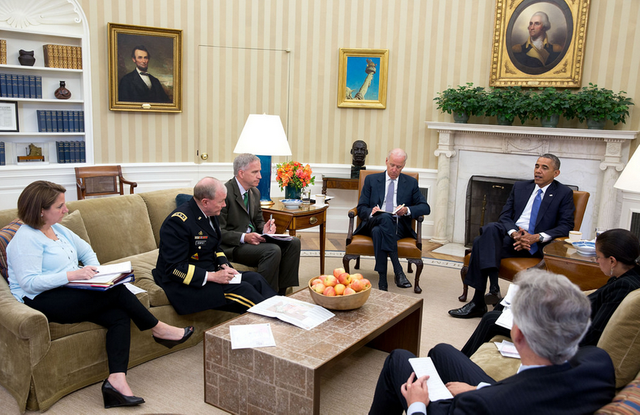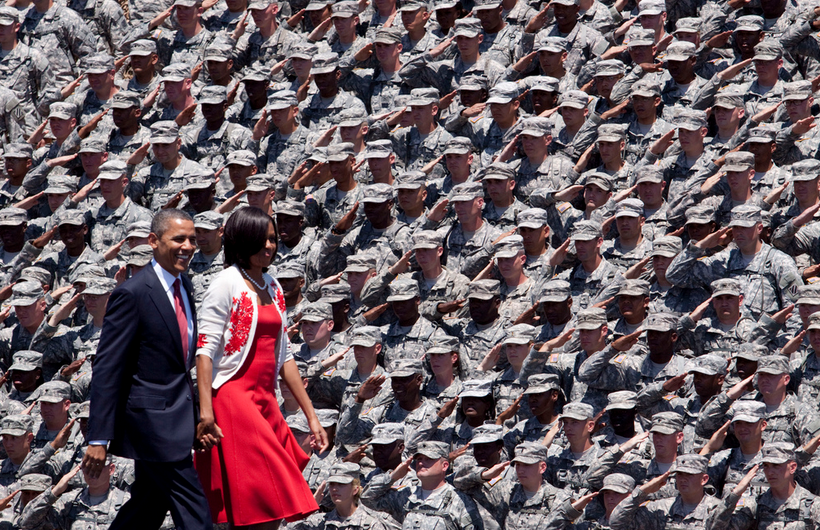Strategic Communition - Control the Message, Control the Audience (PSYOPS)

As a graduate student I once was told by a former Prof. in Defense & Strategic Studies, in reference to Strategic Communication that one must always remember that your SC messages have more than one audience and must be crafted to meet essential policy aims simultaneously.
As such, I will apply another historical example of SC as utilized by the highest level of public official addressing a massive audience but also cognizant of key players within the context.
In 2009, at a speech at the United States Military Academy, President Barack Obama declared that the U.S would commit 30,000 troops to an Afghanistan surge for eighteen months. This speech was popularized by Brad Pitt’s movie War Machine (2017) and provides insight into the difficulty of strategic messaging. After that, withdrawal from Afghanistan would tentatively begin. For war-hhawks and profiteers in the MIC, this statement was counterproductive to the U.S. objectives in Afghanistan. Instead of showing U.S. commitment, it had an opposite effect. It also ham-stringed the counterinsurgency and stability operations in Afghanistan. Some would contend that this statement was a result of the tension between the domestic and international politics in the U.S.
A discussion of the objectives is important to show where and how President Obama’s statement was unwise. Christopher Paul writes that the executive should be in charge of coordinating strategic themes, messages, and policies, so I used the National Security Strategy of 2010 to define some of those objectives. The 2010 NSS emphasized a military rebalance toward “counter-terrorism, counter insurgency, and stability operations” (The White House, 2010, p. 15). It also stressed the importance of strategic communication, demanding that the U.S. “align actions with [its] words” (ibid. p. 16). President Obama’s announcement that called for a surge of troops with a defined limited time-line failed in that it provided an inappropriate public diplomacy message that detracted from the objectives of counterinsurgency and stability operations n Afghanistan.
Instead of showing the United States commitment to an infant, Afghan government, President Obama declared that U.S. support was limited with a hard deadline. This can be viewed as a failure in public diplomacy, defined as the “communication from one government to the people of another” (Paul, 2008, p. 8). The Afghan insurgents heard, “Bide your time for eighteen months, then U.S. will be leaving.” The Afghan government and population heard the same message, but they probably received it with less enthusiasm.
This failure of public diplomacy contradicted the tenets of counterinsurgency, a declared U.S. objective in Afghanistan. Counterinsurgency requires a force to be present and invested in the development of the communities. Preferably, provide security and stability so the communities can develop or rebuild themselves. The process shape, clear, hold, build, and transition illustrates a common COIN process (JP 324, 2009, II10). The longest aspects are hold and build. In this stage, security and stability are paramount. Rushing into the transition phase or imposing a time-line on the latter stages is counterproductive, because it provides an adversary hope for success.

Rather than being a malignant attempt undermine U.S. efforts, as some many neocon voices contended, the statement reflected a discontinuity between U.S. international and domestic politics. The U.S. COIN objectives required troops, so President Obama decided to “send an additional 30,000 U.S. troops to Afghanistan” (2009). However, the American people were weary of war, so the President reassured them that the troops would return home after eighteen months. The attempt to balance the contradicting domestic and international goals resulted in two opposing strategic messages. This “intermestic” tension shows how difficult it is to form coherent strategic communications (Snow, 2015, p. 10). Hence the difficulty in crafting coherent SC when dealing with a diversity of audiences and why so much of public control rests upon distraction and divide and conquer methods as a means to enable effective SC to be properly employed.
References:
Joint Publication 324, Counterinsurgency. (2013). Web. dtic.mil/doctrine/new_pubs/jp3_24.pdf
Obama, Barack (2009). “Transcript of Obama speech on Afghanistan.” CNN. 2 December 2009. http://www.cnn.com/2009/POLITICS/12/01/obama.afghanistan.speech.transcript/index.html
Paul, Christopher (2008). Information Operations Doctrine and Practice. Westport, Connecticut: Praeger Security International.
The White House (2010). National Security Strategy. https://obamawhitehouse.archives.gov/sites/default/files/rss_viewer/national_security_strategy.pdf
Snow, Donald (2015). National Security for a New Era.
Image: Official White House Photograph, PD: President Barack Obama convenes an Oval Office meeting with his national security team to discuss the situation in Iraq, June 13, 2014.
Image: US Army Official, Fort Stewart - Saluting the Commander-in-chief.